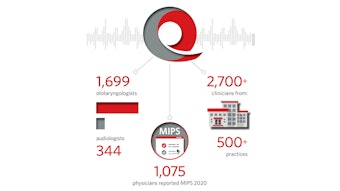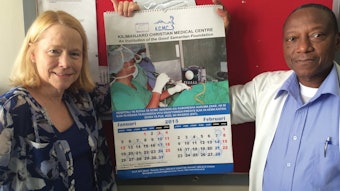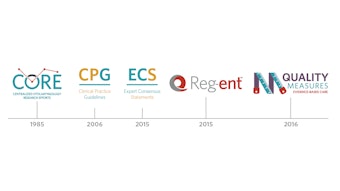From the Education Committees | Sentinel Lymph Node Biopsy for Oral Cavity Cancer: Looking Out for What’s Best for Our Patients
As seen in other disease sites and with the accumulating prospective data, the equivalent outcomes and reduced morbidity of SLNB are worthy of additional study.

A 2015 randomized controlled trial (RCT) demonstrated significant overall and disease-free survival advantages (37% and 66%, respectively) with elective neck dissection (END) versus observation for early-stage oral cavity carcinoma.1 The advantage was conferred both from removal of occult metastatic disease, thereby improving regional control, as well as better identification of high-risk patients who would benefit from adjuvant therapy. The study helped settle the debate regarding the need for electively managing the regional nodes in early-stage oral cavity carcinoma. However, the results also demonstrated that the majority of patients (70%) may be overtreated with negative nodes on final pathology. Despite the relative low morbidity of a selective neck dissection (SND), the operation creates scarring, removes the submandibular gland, and includes risks of cranial nerve damage, chyle leak, infection, and hematoma. Additionally, a study looking at END in low-risk oral cavity cancer showed that patients who were pathologically node negative had an isolated regional recurrence rate of 14%, suggesting that the oncologic outcomes of neck dissection (ND) could be improved.2
Sentinel lymph node biopsy (SLNB) has been employed in other cancers as an alternative to elective nodal dissection with excellent success. In breast cancer, multiple large, randomized trials have shown equivalent outcomes with significantly decreased morbidity and improved quality of life (QOL) compared with axillary nodal dissection, thus cementing the status of SLNB as the standard of care for breast surgery. While electively addressing the nodal basins in melanoma has not been shown to impact survival, identifying nodal metastases is greatly important for prognostication and deciding on the use of adjuvant therapy. SLNB offers a less morbid modality with demonstrated non-inferiority for assessing nodal metastasis when compared with elective nodal dissection in melanoma.
The evidence base for utilizing SND in early-stage oral cavity carcinoma continues to grow. A 2010 multi-institutional, prospective Phase II study by Civantos et al. in 106 patients resulted in a negative predictive value (NPV) of 96%, with the authors concluding that “it is reasonable to initiate clinical trials involving SLNB, with completion ND only for patients with positive sentinel nodes, as a lower morbidity approach for selected patients with T1and T2 oral cancers.”3 This was followed by a similar multicenter, single-arm study utilizing a novel radiotracer in 101 patients with a NPV of 97.8% and an overall accuracy of 98.8%.4 Head-to-head trials of SLNB versus END followed with one reported in France with operable T1-T2N0 oral and oropharyngeal carcinoma patients. The results demonstrated a five-year neck-relapse-free survival of 89.4% in the SLNB group versus 89.6% for END with reduced morbidity and a reduction in hospital stay.5 Most recently, a Japanese multicenter RCT study of 271 T1-T2N0 oral cavity carcinoma patients demonstrated non-inferiority for the SLNB group when compared with END (three-year disease-free survival [DFS] rate 78.7% versus 81.3%, respectively) with statistically significant improved scores on neck and shoulder functionality, constriction, pain numbness, and appearance beyond 12 months postoperatively.6
All these data have culminated in a U.S. randomized Phase II-III trial of SLNB versus END for early-stage oral cavity carcinoma (NRG-HN006) with the primary hypothesis that “SLN biopsy will achieve non-inferior disease-free survival (DFS) compared to END, and will have superior patient-reported neck and shoulder function and quality of life (QOL), as measured by the NDII [Neck Dissection Impairment Index], for early-stage (clinical T1-T2N0) oral cavity squamous cell carcinoma (OCSCC).”7 The study, which is open to accrual, has an accrual goal of over 600 patients. Participating surgeons must undergo a rigorous credentialing process to ensure that they are adequately trained in the procedure, as previous data have suggested a learning curve with regard to outcomes.
SLNB does confer some potential disadvantages when compared with END. These include the additional expense and inconvenience of the nuclear medicine study, timing of the nuclear medicine injection and scan to the operation, and potential increased operative times (or need for a second operation) for completion neck dissection if the SLNB reveals nodal positivity. Additionally, there is a learning curve, as mentioned above, and potential decreased reimbursement with SLNB. These logistical challenges may impede adoption.
As seen in other disease sites and with the accumulating prospective data, the equivalent outcomes and reduced morbidity of SLNB are worthy of additional study. The aforementioned clinical trial (NRG-HN006) holds promise to establish SLNB as the preferred option for nodal assessment in appropriately selected early-stage oral cavity carcinoma patients.
References
1. D'Cruz AK, Vaish R, Kapre N, et al. Elective versus therapeutic neck dissection in node-negative oral cancer. N Engl J Med. 2015;373(6):521-529. doi: 10.1056/NEJMoa1506007
2. Ganly I, Goldstein D, Carlson DL, et al. Long‐term regional control and survival in patients with “low‐risk,” early stage oral tongue cancer managed by partial glossectomy and neck dissection without postoperative radiation. Cancer, 2013:119:1168-1176. doi: 10.1002/cncr.27872
3. Civantos FJ, Zitsch RP, Schuller DE, et al. Sentinel lymph node biopsy accurately stages the regional lymph nodes for T1-T2 oral squamous cell carcinomas: results of a prospective multi-institutional trial. J Clin Oncol. 2010;28(8):1395-400. doi: 10.1200/JCO.2008.20.8777.
4. Agrawal A, Civantos FJ, Brumund KT, et al. [(99m)Tc]Tilmanocept accurately detects sentinel lymph nodes and predicts node pathology status in patients with oral squamous cell carcinoma of the head and neck: results of a phase III multi-institutional trial. Ann Surg Oncol. 2015;22(11):3708-3715. doi: 10.1245/s10434-015-4382-x
5. Garrel RA-OX, Poissonnet G, Moyà Plana A, et al. Equivalence randomized trial to compare treatment on the basis of sentinel node biopsy versus neck node dissection in operable T1-T2N0 oral and oropharyngeal cancer. J Clin Oncol. 2020;38(34):4010-4018. doi: 10.1200/JCO.20.01661
6. Hasegawa YA-O, Tsukahara K, Yoshimoto SA-OX, et al. Neck dissections based on sentinel lymph node navigation versus elective neck dissections in early oral cancers: a randomized, multicenter, and noninferiority trial. J Clin Oncol. Published online April 20, 2021. doi: 10.1200/JCO.20.03637
7. https://www.nrgoncology.org/Clinical-Trials/Protocol/nrg-hn006?filter=nrg-hn006












![05 Hpv Vaccination [converted]](https://img.ascendmedia.com/files/base/ascend/hh/image/2021/06/05_HPV_Vaccination__Converted_.60d0a1f25afe4.png?auto=format%2Ccompress&fit=crop&h=191&q=70&rect=45%2C0%2C1830%2C1830&w=340)












